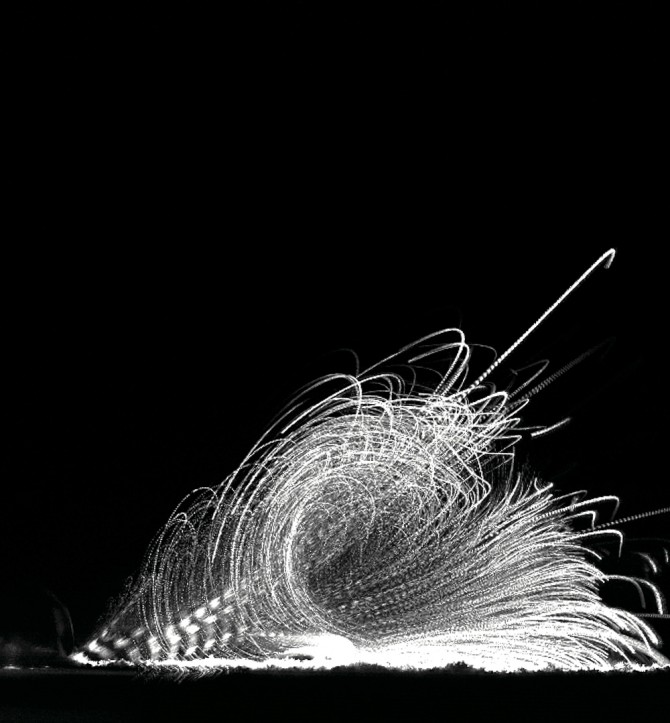Raindrops launch plant spores into the wind, spread fungi
By Kelsey O’Connor
That distinctive smell following rainstorms arises from dry particles unearthed when raindrops strike soil.
By a similar process, rain that hits plants disturbs spores on the leaves, launching disease-causing fungi into the air. New Cornell-led research explains the physics behind how individual water droplets create air flow patterns capable of transporting thousands of spores and spreading disease from plant to plant.
At a microscopic level, the researchers found, spores from the wheat rust fungus Puccinia triticina were launched into the air from the impact of falling water. The spores followed upward swirling, tornado-like trajectories, or vortex rings.
“When a raindrop, or any object, impacts the surface of a plant, it is carrying air with it. When the rain comes to a sudden halt, the air keeps flowing down. This moving air creates an air vortex ring capable of carrying spores aloft,” said Sunny Jung, associate professor of biological and environmental engineering and author of “Vortex-Induced Dispersal of a Plant Pathogen by Raindrop Impact,” published Feb. 25 in Proceedings of the National Academy of Sciences.
The study by researchers in Jung’s Bio-Inspired Fluid Lab, along with researchers at Virginia Tech, is the first to explore how dry spores are dispersed by air vortices induced by raindrops.
Dry plant spores can be deadly problems for plants. Researchers estimate that wheat pathogens are responsible for up to $5 billion in damages annually across the globe. Previous research has shown that spores can travel hundreds of kilometers in the atmosphere, and even cross continents.
A vortex is a ring of recirculating particles – think smoke rings or whirlpools. To understand how the spores are dispersed by an air vortex after rain hits a plant leaf, Jung said to picture the chalk gymnasts use on their hands. After they pat it on, the leftover chalk drifts down to the floor, and when it hits, the air swirls up around where it made impact.
Once airborne, spores avoid falling raindrops by following air streamlines around each drop before catching wind currents, which can carry them greater distances. The researchers used high-resolution cameras to capture the process, examining: the number of spores ejected; how they were dispersed; the distance and trajectory spores traveled; and the effect of surrounding air flows. Researchers also used glass beads with a similar density and radius to the spores to help visualize the air flow.
The results revealed the physical nature of a process that causes severe economic damage for farmers and spreads plant diseases on a global scale.
“At the very beginning of the rainfall, millions of dry spores are liberated from the plant,” Jung said. “By having the wind around it, these dry spores can easily disperse to another plant. Pathogens spread in this way can ruin an entire crop.”
Understanding this process is an important step toward understanding how plant diseases, which threaten food safety and security, spread through crops. Jung said the mechanism can be applied to any small particles, such as pollen and other allergens, revealing how rain-plant interactions impact human health. The next phase of the research will seek to understand how spores land.
Seungho Kim, a postdoctoral researcher at Cornell, was lead author. Other authors include Jung and three researchers at Virginia Tech.
The research was supported by funding from the National Science Foundation and the U.S. Department of Agriculture.
Kelsey O’Connor is a freelance writer for the College of Agriculture and Life Sciences.
Media Contact
Get Cornell news delivered right to your inbox.
Subscribe

